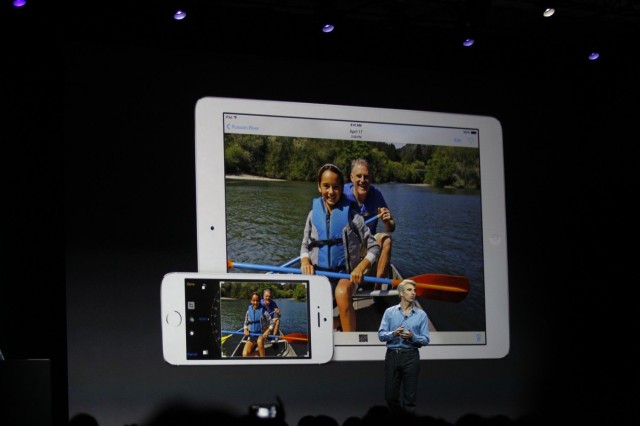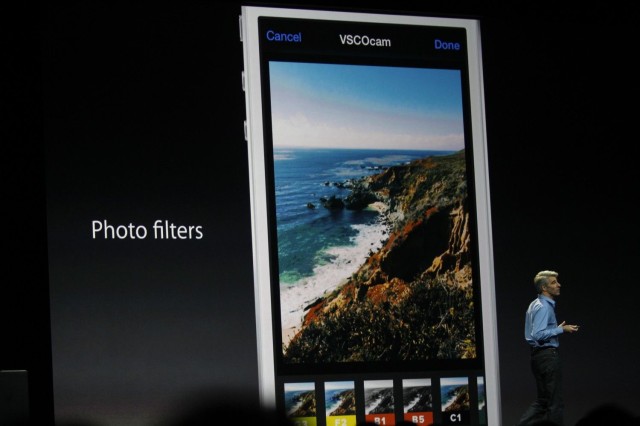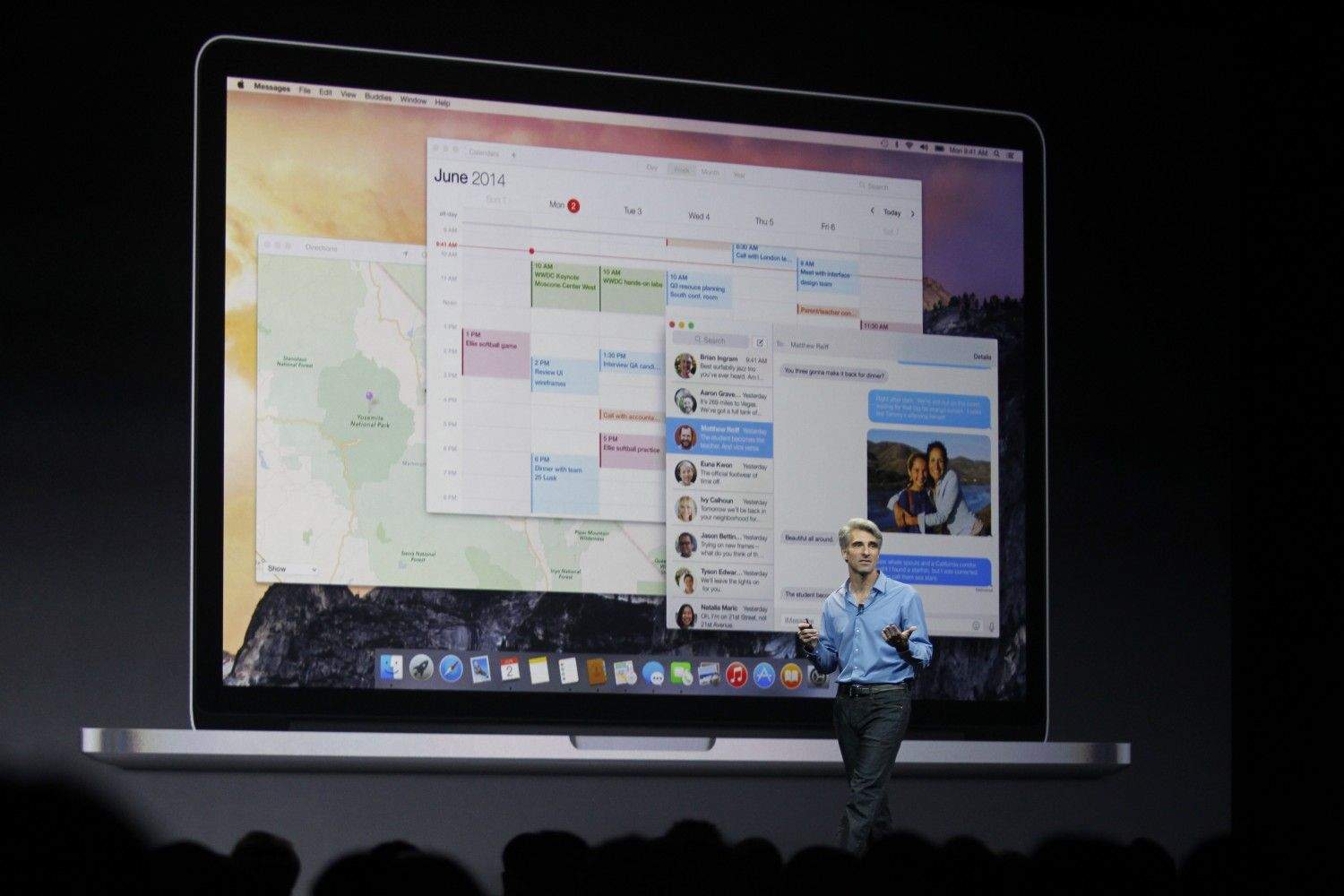With iOS 8 and OS X Yosemite, Apple is finally showing us its idea of how we’ll compute in the future. Perhaps not surprisingly, this pristine vision of our computing destiny — unveiled after years of secret, patient and painstaking development — aligns perfectly with how we currently use our computers and mobile devices.
The keynote at this year’s Worldwide Developers Conference earlier this month not only showed off a new way to think about computing, based on data not devices, but also silenced pretty much every criticism leveled at the company over the past few years.
Let’s take a look at Apple’s new way of doing things, which fulfills Steve Jobs’ post-PC plan by minimizing the importance of the Mac.
How we used to do it
There are two ways we go about any given computing task. One is simply grabbing the nearest device. If you want to know who played Biff Tannen in Back to the Future, for instance, you don’t care how you find out. You just take your iPhone out of your pocket or start typing on the Mac in front of you. (The answer is Thomas F. Wilson by the way.)
The other way we start a task is to not start it. If I want to make a long reply to an email, I’ll wait until I’m at my Mac (and usually forget to do it) or – to use a current example – if I want to know today’s World Cup fixtures, I’ll check on my iPad or iPhone, because then Google knows where I am and gives the results in my time zone.
Instead of forcing OS X to be more like iOS (as we all thought would happen with OS X 10.10 Yosemite), Apple’s ecosystem instead lets each device do what it does best — and uses iCloud to tie them together.
In with the new: Continuity
Writing about the new Continuity features Apple is using to unite iOS and OS X Yosemite, Apple Outsider’s Matt Drance wrote: “The ‘Continuity’ suite of features says more to me than anything else announced [at WWDC], naturally blurring the line between Mac and iPhone and iPad while still accepting each product for what it is.”
That’s dead right, but there’s more to it than just that. Continuity covers a few features. You can make calls from your Mac using the iPhone’s radios, ditto for SMS. You can also connect your Mac to the Internet using the iPhone’s data connection, but with all the settings and password shenanigans stripped away.
The biggest part, though, is Handoff. Handoff lets you start a task on one device and finish on another. The obvious example is email – start it on your iPhone, then realize you need to add some attachments and continue on your Mac.
But what Handoff really does is let each device be itself. The iPhone is a quick-twitch device, perfect for messaging and taking photos. The iPad excels at both reading and viewing, but also offers the direct manipulation of your data that the Mac can’t even wish for. And the Mac does everything, but it’s not as polished.
Examples: You can take pictures on your iPhone and dump them into a Keynote presentation. Then, you add other pictures and documents from the Mac, in the same app and in the same document, just with a machine better suited to the task. Then you finesse the presentation on your iPad, where you can fine-tune everything with your fingers. This is clearly the reason Apple reset the iWork suite last year to bring parity to iOS and OS X versions.
iCloud as ‘digital hub’
Back at WWDC 2011, Steve Jobs said this: “We’re going to demote the PC and the Mac to just be a device. We’re going to move your hub, the center of your digital life, into the cloud.
Up until iOS 8 and Yosemite, iCloud wasn’t much more than a series of tubes. There were occasional moments of magic – my mother just got an iPad 4 to replace her first-gen iPad and was amazed when she just tapped in her Apple ID, waited a few minutes and saw all her apps and photos and even her wallpaper restored, just like before – but in general iCloud, was a clunky alternative to Dropbox.
Now, iCloud is the hub. It’s your photo library, it’s your backup and it’s even your Finder. Skeptics will say that iCloud Drive is just Dropbox, but that’s missing the point as much as calling the iPod “just an MP3 player” back in 2001.
iCloud Drive (and the related iCloud photo albums) finally lets you forget where your documents are, because they’re everywhere. The previous iOS model trapped documents inside the apps that created them. The idea was good in principle – you look in Pages to find your Pages docs – but in practice it led to multiple copies of the same file hidden inside different apps.
Now you create one file, and you can access and work on it from anywhere. Nerds like you will laugh and say we could already do this with Dropbox, but remember, Apple isn’t making stuff for us. It’s making stuff for the hundreds of millions of normal folks who buy its hardware.
Being able to get at your data wherever you are, whichever device you’re using, is huge. Not only can you forget about managing your files, but they’re all backed up for you.
Some will call this “lock-in,” but to me it’s no more of a lock-in than the one exercised by cheese — which locks me into eating it because it’s so damn delicious. And unlike cheese (which you’ve already eaten), you can always take your data elsewhere.

iOS gets more Mac-like
With iOS 8, the iPad and the iPhone get more like the Mac than ever. In fact, with this release you will be able to dump the Mac entirely if you like.
Even when I used the iPad for all my work, I still needed a Mac around. I needed it to back up my photos, and I needed it as a place to store my documents and so on.
If anything, iCloud Drive and iCloud photo albums replace the Mac.
The biggest problems on the iPad were managing documents and managing photos. iOS 8 and Yosemite take care of both.
Photos
Photo management is in a terrible state. I have pictures in Lightroom, Dropbox, on Flickr and on my iPad. When I get a photo in my mail that I want to keep, I have to mark that email as unread, then open it on my iPad so I can save it to my Camera Roll (and from there it is spirited off to Flickr via the Flickr app’s auto-upload).
Next year, when the Photos app for OS X launches, I’ll be able to forget about organizing my photos forever. I’ll just pay Apple a few extra bucks a month and enjoy a 200GB photo library hosted on iCloud. Wherever I take, save or edit a photo, it will be mirrored to all my other devices. I’ll still be using a Mac, but if you own a 32GB iPhone and you take a lot of pictures, you’ll never need to delete photos to free up space for new ones. This is “post-PC” for realz.

Multitasking, take 2
The other big headache on iOS is working with documents in various apps. The iOS paradigm of single-purpose apps that focus on one task is great in theory, but falls down when you want to shift a single task between them. That is, you have to save yet another copy of that document or photo before you can open it and work on it in another app.
iOS 8’s plug-ins fix this. Plug-ins essentially let you use one app’s features inside another app. The easiest demo is photos, where a filter app can make its filters available right there inside the native Photos app.
But another plug-in could be an Evernote clipper that pops up inside any app, or a clipboard that can keep track of multiple pasteboard items. We’ve already seen this with the system-wide Twitter and Flickr sharing panels. Now third-party developers have access to the same thing.
Another neat feature of plug-ins is that you don’t need to wait for your favorite app to add support for, say, Instapaper. If Instapaper provides a plug-
in, then any app that can share a URL can send it to Instapaper. This means less work for developers, and a more consistent experience for users.
Apple’s biggest strength
There are two prevailing and contradictory views of Apple. One is that the company is arrogant and dictates its superior tastes to the “faithful.” That it is so obsessed with control and secrecy that it will forego useful features out of spite.
The opposing view is that Apple makes great choices and everything just works. It’s products are easy to use. But boy, wouldn’t it be nice if we could get that thing Android has had for years now?
What both of these views acknowledge is that Apple takes its own sweet time to do things. And I think that in its 2014 WWDC keynote, Apple showed off its biggest strength: patience.
Clearly, third-party keyboards, plug-ins, a universally accessible file system and great photo management are all obvious features for iOS. But equally clearly, Apple has been working on these for years. It has waited until it could implement these features securely. It has waited until the hardware was powerful enough to run two apps simultaneously without crashes or data loss.
And it has worked on all of this in silence while everybody in the tech press complained over and over about the lack of these exact same features.
One of the most memorable quotes from recent Apple events was Phil Schiller’s “Can’t innovate anymore, my ass.” That line showed the frustration that Apple’s secrecy must bring. You know you have something so cool that it’ll shut up all your critics, but you can’t show it off until it’s done. That’s patience.
This year’s WWDC keynote was fantastic. Why? Maybe because Apple was finally able to show off what it has been working on for years. And not just the four-years-in-the-making Swift programming language, but a new file system for both OS X and iOS, new integrations that blur the edges between all your devices, and even a teaser for Apple’s next step, health care. Everyone at the keynote was having a ball, because they could at last show off what they’ve been working on in secret for so long.
There might now be a third way to look at Apple: You can see it as a company that listens to exactly what its customers want, and then spends as much time as it needs to bring them exactly that. You just have to be patient.


